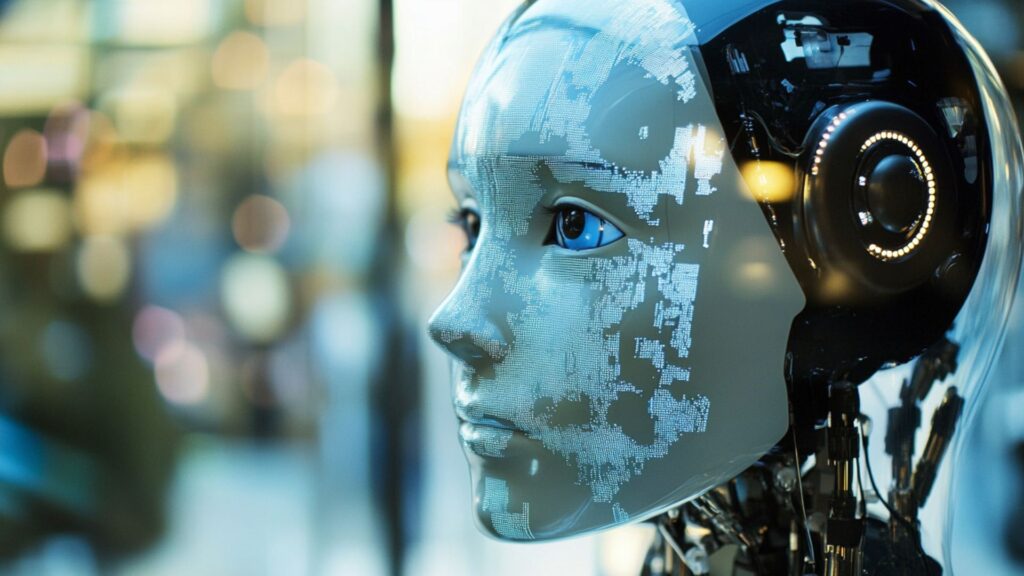AI in HR: Candidate Selection, Interviews, and Hiring Automation

Artificial intelligence is revolutionizing human resources, transforming how companies recruit, evaluate talent, and manage their workforce. Traditional hiring processes are time-consuming, resource-intensive, and susceptible to unconscious bias. Manual resume screening takes days or weeks, while subjective evaluations may overlook qualified candidates based on irrelevant factors.
AI recruiting tools address these challenges by automating repetitive tasks, objectively analyzing candidates, and making data-driven decisions. Automated systems screen thousands of applications in minutes, conduct video interviews analyzing verbal and nonverbal communication, and predict candidate success based on historical data. These tools operate continuously, identifying top talent based on skills, experience, and cultural fit rather than demographic characteristics.
Companies benefit from automated scheduling, predictive analytics, forecasting hiring needs, and reduced selection bias. As AI in hiring matures, they're becoming essential for organizations competing for talent in increasingly tight labor markets.
The Rise of AI in Human Resource Management
Artificial intelligence applications in HR management are expanding rapidly, driven by advances in machine learning, predictive analytics, and natural language processing. These technologies enable companies to automate routine tasks, minimize errors, and focus human recruiters on strategic activities that require judgment and interpersonal skills. AI systems learn from historical hiring data to predict future needs, identify successful candidate profiles, and optimize recruitment strategies.
Core AI technologies transforming HR include:
- Machine learning (ML): Artificial intelligence recruitment learns from historical hiring data to improve candidate screening accuracy over time. ML models identify patterns in successful hires, matching candidate qualifications and experience to job requirements while adapting to changing organizational needs.
- Predictive analytics: These tools forecast hiring demand, employee turnover risks, and workforce productivity trends. Companies use predictive models to anticipate staffing needs, identify retention risks, and discover internal mobility opportunities before positions become vacant.
- Natural Language Processing (NLP): NLP analyzes resumes, job descriptions, and written interview responses to assess candidate qualifications. The AI in talent acquisition extracts relevant information, interprets context, and matches candidate experience to position requirements more accurately than keyword searches.
How AI Transforms Candidate Selection
AI is redefining candidate selection by replacing manual resume review with automated screening that's faster, more consistent, and less biased than traditional approaches. Previously, recruiters manually reviewed hundreds of applications, a process that consumed significant time while introducing inconsistency and potential bias. AI hiring accelerates this process dramatically while minimizing human error through algorithmic objectivity.
AI-powered systems use machine learning to compare candidate skills, experience, education, and qualifications against job requirements, automatically prioritizing the most qualified applicants. Beyond surface-level matching, AI in recruiting analyzes candidate career trajectories to predict future performance indicators, cultural compatibility, and career growth potential. These predictive hiring models help employers focus on candidates most likely to succeed and remain with the organization long-term.
Automated selection increases consistency by applying uniform criteria to every application, reducing the unconscious biases that affect human decision-making. Algorithms evaluate candidates based on relevant qualifications and experience rather than demographic characteristics, such as age, gender, or educational pedigree, that may influence human reviewers. This objectivity allows recruiters to spend more time on meaningful interactions — conducting in-depth interviews, assessing interpersonal skills, and evaluating cultural fit — while AI handles the initial screening efficiently.
Key benefits of AI-powered candidate selection:
- Rapid resume screening: AI instantly filters thousands of applications, ranking candidates based on job-specific qualifications. This speed enables companies to respond to applicants quickly, improving the candidate experience and reducing time-to-hire.
- Improved matching accuracy: Semantic analysis enables artificial intelligence in recruitment to understand context and meaning rather than just matching keywords. Systems accurately match candidate experience to job descriptions by interpreting responsibilities and achievements, not just titles or terminology.
- Predictive success modeling: Machine learning models predict job performance using behavioral patterns and historical data from past hires. These predictions help identify candidates likely to excel in specific roles and organizational cultures.
- Reduced bias and increased objectivity: Standardized assessment criteria minimize conscious and unconscious bias in initial screening. By focusing on skills and qualifications rather than demographic factors, AI promotes more equitable hiring practices.
- Enhanced candidate engagement: Faster communication and transparent next steps improve candidate experience and strengthen employer brand. Applicants appreciate timely responses and clear information about their status in the hiring process.
AI-Powered Resume Screening and Job Matching
AI in recruitment resume screening represents one of the most impactful applications of artificial intelligence in recruitment. Natural language processing enables systems to comprehensively analyze resumes, extracting and interpreting information about skills, work experience, educational credentials, and professional certifications. Unlike simple keyword matching, NLP understands context, recognizing how different job titles, responsibilities, and achievements relate to position requirements.
Key capabilities of AI and talent acquisition screening:
- Intelligent skill identification: NLP identifies both explicitly stated skills and those implied by job responsibilities and accomplishments. The technology recognizes skill synonyms and related competencies, ensuring qualified candidates aren't overlooked due to differences in terminology.
- Contextual experience analysis: AI assesses the depth and relevance of candidate experience by analyzing responsibilities and achievements rather than just job titles. This contextual understanding produces more accurate qualification assessments than traditional screening methods.
- Requirement-based compatibility matching: Algorithms evaluate how well candidate profiles align with job requirements, automatically filtering out clearly unqualified applicants while flagging strong matches for human review. This filtering dramatically reduces the number of resumes recruiters must personally evaluate.
- Systematic bias reduction: Standardized assessments minimize subjective and discriminatory decisions by focusing on job-relevant qualifications. AI systems can be configured to ignore demographic information, such as age, gender, ethnicity, or educational institution names, that might trigger unconscious bias.
- Recruiter time savings: Automation handles the most time-consuming phase of hiring — initial application review — allowing recruiters to focus on interviewing, relationship building, and strategic talent planning rather than administrative screening tasks.
- Consistent evaluation at scale: Artificial intelligence and recruitment processes thousands of applications with uniform quality and attention to detail. Unlike human reviewers whose consistency may decline with fatigue or time pressure, AI maintains the same evaluation standards across all candidates.
Predictive Analytics in Candidate Evaluation
Modern AI in HR recruitment moves beyond intuition and gut feelings to leverage predictive analytics that identify the best candidates for specific roles and organizational contexts. Predictive models analyze vast amounts of data — including candidate backgrounds, assessment results, interview performance, and historical hiring outcomes — to forecast which applicants will succeed, remain with the company long-term, and contribute most effectively to organizational goals.
Key applications of predictive analytics in hiring:
- Performance forecasting: Historical data from past hires reveals which characteristics and experiences correlate with high performance in specific roles. Predictive models identify these success indicators in current candidates, helping recruiters prioritize applicants most likely to excel.
- Cultural fit assessment: Analytics evaluate the alignment between a candidate's values, work style, and organizational culture. By analyzing how well candidate preferences and behaviors align with the company environment, predictive models reduce turnover driven by cultural mismatches.
- Retention likelihood prediction: Models assess the probability that candidates will remain with the organization based on career ambitions, compensation expectations, job stability history, and growth opportunities. This insight helps companies focus on candidates seeking long-term careers rather than short-term positions. AI in talent acquisition enables organizations to make more strategic hiring decisions by identifying candidates whose career goals align with long-term organizational needs, reducing turnover costs and building more stable, engaged teams.
Revolutionizing Interviews Through AI

Artificial intelligence is transforming traditional interviews into more efficient, objective, and insightful assessment processes. AI in recruitment interview platforms capture and analyze candidate responses through video or audio recordings, evaluating both what candidates say and how they communicate. These systems assess confidence, emotional expression, engagement level, language clarity, and communication effectiveness — factors that influence job performance but are difficult to measure consistently in traditional interviews.
Core capabilities of AI interview systems:
- Automated structured interviews: AI platforms administer standardized question sets with consistent evaluation criteria, ensuring every candidate faces the same assessment conditions. This standardization increases fairness while enabling accurate comparisons across large applicant pools.
- Video interview analysis: Computer vision technology analyzes nonverbal communication, including eye contact, facial expressions, posture, and gestures. These nonverbal cues provide insights into confidence, engagement, and interpersonal skills that complement verbal responses.
- Emotion recognition: Artificial intelligence in recruitment detects stress levels, enthusiasm, empathy, and other emotional states through facial expression analysis and voice tone assessment. Understanding candidate emotional responses helps evaluate soft skills and cultural fit.
- Speech pattern analysis: Systems evaluate tone, pace, articulation, and verbal fluency to assess communication skills. Analysis of language complexity and clarity helps predict how effectively candidates will communicate in professional settings.
- Behavioral assessment: AI identifies problem-solving approaches, leadership indicators, and interpersonal styles through response content and delivery. These behavioral insights predict how candidates will perform in team environments and handle workplace challenges.
- Consistent evaluation criteria: Every candidate is assessed using identical standards, eliminating the variability that occurs when different interviewers evaluate applicants. This consistency improves hiring quality while reducing bias in selection decisions.
Virtual Interview Assistants and Chatbots
Artificial intelligence recruitment is transforming candidate engagement by automating early-stage interactions, answering questions instantly, and streamlining administrative tasks throughout the recruitment process. These virtual assistants operate 24/7, providing immediate responses that keep candidates engaged and informed while significantly reducing recruiter workload.
Chatbots handle pre-screening by asking initial qualification questions, collecting necessary information, and routing qualified candidates to the next stage while politely informing unqualified applicants they won't move forward. This automation reduces delays and ensures candidates receive prompt feedback regardless of application volume. Many chatbots also provide real-time status updates, explain next steps in the hiring process, and offer helpful information about the company and position.
Key benefits of AI and talent acquisition chatbots:
- Automated interview scheduling: Chatbots integrate with calendar systems to coordinate interview times without manual back-and-forth communication. Candidates select convenient time slots, and the system automatically confirms appointments with all participants.
- Efficient pre-screening: Virtual assistants verify key qualifications and assess basic fit before human recruiter involvement. This filtering ensures recruiters spend time only on candidates who meet essential requirements.
- 24/7 candidate support: Chatbots provide immediate assistance outside business hours, answering questions about application status, job requirements, company culture, and next steps. This responsiveness improves candidate experience significantly.
- Increased engagement: Keeping candidates informed throughout the hiring process minimizes uncertainty and frustration. Regular communication — even if automated — demonstrates respect for applicants' time and interest.
- Personalized interactions: Advanced AI chatbots for recruiting tailor responses based on candidate profiles, providing relevant information, customized reminders, and role-specific guidance. Some systems collect data on candidate preferences and communication styles to optimize interactions.
By automating routine communications and administrative tasks, chatbots free recruiters to focus on relationship building, in-depth candidate assessment, and strategic talent planning. The combination of automation efficiency and human expertise creates superior candidate experiences while improving hiring outcomes.
Emotion and Speech Analysis in AI Interviews
Advanced artificial intelligence and recruitment platforms employ emotion recognition and speech analysis to evaluate candidates more comprehensively than traditional methods allow. Facial recognition technology tracks microexpressions — subtle, involuntary facial movements that reveal genuine emotional responses. Speech analysis tools assess vocal characteristics, including tone, pace, pitch variation, and verbal fluency, to evaluate communication effectiveness and emotional state.
These technologies provide standardized, data-backed assessments that complement human interviewer impressions. However, emotion and speech analysis raise critical ethical considerations. Candidates should be informed when AI will analyze their interviews and how that data will be used in hiring decisions. Transparency builds trust and allows candidates to provide informed consent.
Key considerations for AI-based emotion and speech assessment:
- Facial microexpression analysis: AI recruiting tools measure subtle emotional signals associated with confidence, stress, enthusiasm, and authenticity. These indicators help assess soft skills, such as empathy and interpersonal awareness, that are difficult to evaluate solely from verbal responses.
- Voice and speech analysis: Systems evaluate tone, pitch, speaking pace, articulation clarity, and language complexity. These vocal characteristics indicate communication skills, confidence levels, and the ability to convey ideas effectively — essential factors for customer-facing and leadership roles.
- Standardized soft skill evaluation: AI provides objective measures of traditionally subjective attributes like charisma, leadership presence, and emotional intelligence. Quantifying these qualities enables more consistent evaluation across candidates.
- Algorithmic fairness requirements: AI emotion and speech models must be trained on diverse datasets to avoid bias against accents, cultural communication styles, or neurodivergent candidates whose expressions differ from majority patterns. Regular audits ensure these systems don't disadvantage qualified candidates.
- Transparency and candidate consent: Clear communication about which AI measures are used, how data is analyzed, and their weight in hiring decisions is essential. Candidates deserve to understand how technology evaluates them.
- Human oversight necessity: AI analyses should support rather than replace human interviewer judgment. Technology provides data points, but experienced recruiters must interpret results in context and make final decisions, considering factors that algorithms cannot measure.
Automating the Hiring Process: From Selection to Onboarding

AI hiring extends beyond candidate evaluation to streamline the entire hiring workflow from initial application through employee onboarding. Advanced systems manage offer letters, background checks, document collection, and new employee orientation — reducing administrative burden while ensuring accuracy, compliance, and timely communication throughout these critical processes.
When candidates accept offers, AI-powered onboarding platforms automatically initiate integration processes tailored to each new hire. Intelligent systems recommend personalized training modules, facilitate introductions to team members, grant access to necessary tools and systems, and guide new employees through initial tasks. This automation streamlines post-hire activities, enabling HR staff to focus on relationship building, culture development, and strategic initiatives.
Key automation AI in recruiting and onboarding:
- Automated offer generation: AI creates customized offer letters incorporating role-specific details, compensation packages, and company policies. Automated tracking ensures timely delivery and follows up on pending responses, maintaining momentum in the hiring process.
- Smart background verification: Integration with verification databases enables rapid identity confirmation, employment history validation, and credential checking. Automation accelerates background screening while maintaining thoroughness and compliance with legal requirements.
- Document management: Digital systems streamline the collection of documents, including signed contracts, tax forms, and compliance paperwork. Automated reminders ensure completion while centralized storage maintains organized records accessible to authorized personnel.
- Personalized onboarding paths: AI recommends role-specific training resources, introduces company policies relevant to each position, and creates customized orientation schedules. New employees receive exactly the information and preparation they need, without being overwhelmed by irrelevant content.
- Access and equipment provisioning: Automated workflows trigger account creation, system permission setup, and equipment allocation. New hires arrive on their first day with everything ready, eliminating delays and creating positive initial impressions.
Challenges, Bias, and the Future of AI in HR
Despite its transformative potential, AI in hiring faces significant challenges requiring careful management. Algorithmic bias is the most serious concern — AI systems trained on historical data may perpetuate past discrimination, unintentionally depriving certain demographic groups based on gender, age, ethnicity, or socioeconomic background embedded in training data.
Lack of transparency creates accountability challenges. When algorithms reject candidates, recruiters and applicants struggle to understand the reasoning behind decisions. This "black box" problem erodes trust and makes identifying errors difficult. Data privacy concerns arise as AI platforms collect extensive personal information, requiring strong security measures and regulatory compliance.
The future of AI in HR lies in balanced human-AI collaboration combining technological efficiency with human judgment, empathy, and ethical oversight. Organizations implementing AI thoughtfully — with attention to bias mitigation, transparency, and oversight — will gain competitive advantages in talent acquisition while maintaining ethical practices serving both business goals and candidate welfare.


